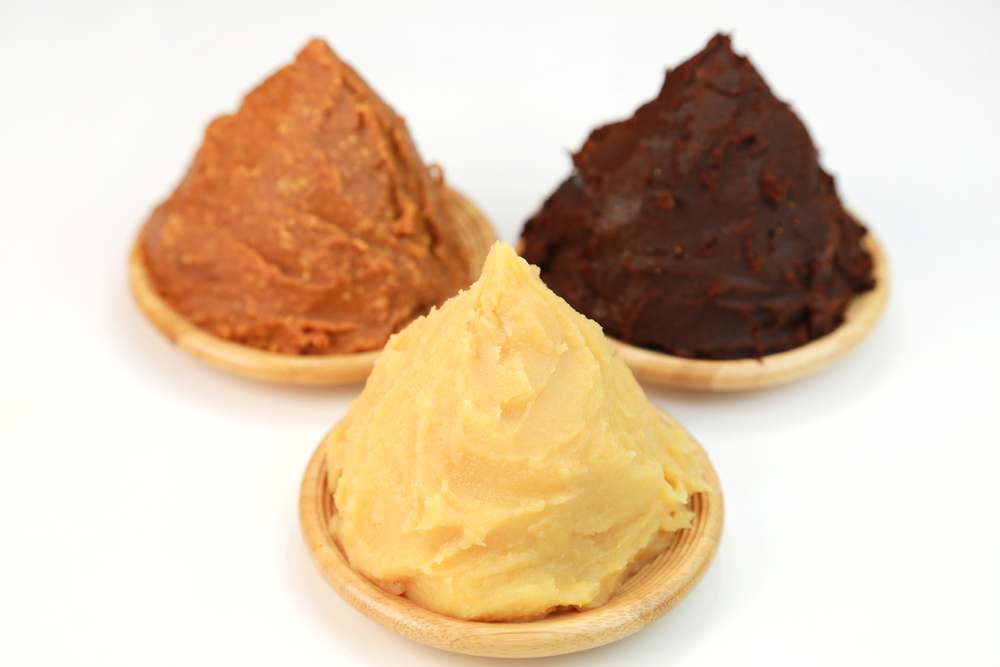Last Updated on November 26, 2020 by Niks
Miso a type of simmer processed food used in Japan for cooking since the eighth century. It is the main ingredient in Japanese cooking, which adds a salty and a unique taste to the dishes. Being an Asian product it is easily available in the Asian market.
What is Miso?
Miso forms the core of the basic dishes, soup with Miso. It is the main ingredient in Japanese dishes, which is a combination of soybean chunks, cereals, salt, and koji. Miso is made by processing rice, soybean, barley, wheat to form a smooth paste.
The classical Japanese condiment Miso is made by simmering barley, rice, and soybeans with salt and fungi. The Miso is available in the market in paste form.
During the simmering process of Miso, the soybeans are used for simmering. The key ingredient for a different type of Miso is soybean. One spoon of Miso contains 200-300 mg of sodium; it contains a high amount of sodium quantity.
Due to the combination of different ingredients required to make Miso the taste of the Miso differs.
Miso is a salty and sweet taste yummy. It is very healthy and nutritious contains vitamins like Vitamin K and B12, proteins, and minerals. Miso the simmer paste has a similar look as that of peanut butter.
It can be of silky or chunky texture depending on its type and can be processed anywhere to store for a few weeks and even years.


Types of Miso
Miso can be classified into different types depending upon its look, color, taste, smell, place of processing, and the period of processing. There are 1000 types of Miso available in the market.
The two main varieties of Miso which are Light Miso and Dark Miso are traded in the United States. The Light Miso is also called White Miso whereas, the Dark Miso is well known as Red Miso.
Another variety of Miso is available which is a combination of different Miso pulps known as awase.
The White Miso is made of a mixture of soybean and brown rice which processed to get a light smooth texture and sweet taste.
The White Miso is maximally used in Japan for soaking fish, meat, seasoning salads, adding an extra flavor to the soup.
The white Miso is also known as “Shiro Miso” and Red Miso is known as “Aka Miso” in the Japanese language.
With the combination of barley, soybeans, and other cereals Red Miso is formed. The processing for Red Miso is a long one. The salty taste and smelly flavor of Red Miso go well with soups, meat.
Sometimes yellow Miso is simmered with barley, a few amount of white rice, and forms a yellowish color known as Mugi Miso.
According, to the Japanese language “mugi” means cereals like barley and wheat. Saikyo Miso is made in the southern central Kansai area of Japan. The Awase Miso is a combination of both red and white Miso, popularly added in Japanese dishes.
The Light Miso is a combination of less soybean substance and more cereals like white rice, it is soft, sweet in taste, and requires less time for processing.
The dark Miso is processed for a long time to acquire its unique smelly and saltier taste. It is formed of more soybeans substances to get a unique flavor. The color of Dark Miso varies from light to black.
Depending upon the flavor and taste of the recipes, the different types of Miso can be added as an ingredient in the dishes.
The dark Miso adds smellier flavor and salty taste to the recipes whereas light Miso goes well with curry and sweet dishes.
To gain extra flavor and taste in simmers and soups, brown Miso can be added. Only a few unique varieties of Miso are used in the US whereas, in Japan, several varieties of Miso are used in recipes.
A dark Miso- Hatcho and genmai made of cereals like brown rice are available in the homeland of the U.S.
Buy Miso from
Miso is easily available in Asian markets and even on online sites. It is sold in plastic vessels or bottles. The Miso is available in the containers in the form of Miso paste or soybean paste.
It is available in the grocery section or the freezer section of healthy food storage. The customers can choose the variety of Miso depending upon the recipes.


Store
Miso can be stored for more than a year in freeze within a sealed container. Being a processed product Miso can be preserved for a long time.
The Dark Miso can be preserved for more time being because it is processed for a long time whereas, light Miso is processed for a less period hence can be kept for less than a year.
If Miso is wrapped in plastic foil after using it, then it will help to sustain its original color as it oxidates. Miso should be kept in the refrigerator in a tightly firmed container.
The best way to store Miso is to keep it refrigerator even when the seal is opened and Miso is in use, to sustain its nutritional advantages.
When bad odor, taste, and texture appear of Miso, it should be immediately eliminated from use. Whenever we want to take out a spoon of Miso, we should dip a clean spoon in the bottle to take out Miso.
Uses
The processed paste Miso can be used in different recipes in various ways. Miso can be used for garnishing dishes, blended with sauce, dough, stews, even when frying dishes.
Being a refined food Miso must be added at the end of long term cooking dishes. The Miso is the simmered paste-form of soybean. It adds a unique flavor to the dishes.
The Miso paste can be added in soups, garnishing salads, vegetables, can also be used with fried meat, fishes.
Miso is mostly used in southern parts of Japan. It is taken as an appetizer during breakfast or even lunch, with soups and vegetables. Miso is one of the best ingredients with vegetarian and non- vegetarian dishes.
The Miso can be used as a substitute in the absence of salt or soya sauce. Overcooking or boiling the dishes after adding Miso may wipe out the vital bacteria that are available in Miso, hence will reduce the healthy advantage of Miso.
Taste of Miso
The taste of Miso varies also with its color and flavor. The color of Miso differs from red to brown.
The taste of Miso is salty, sour, and delicious. The white Miso taste sweet, some of the Miso have smooth, soft buttery texture whereas, some are crunchy. The smelly and salty flavor of Miso adds extra taste to the recipes.
Cooking with Miso
Miso is a readymade paste available in bottles to be added to recipes. It should be added to the dishes just at the end of cooking so that the perfect smell and taste of Miso sustains in the recipe.
It adds a unique flavor to sweet dishes when soaked in the dishes. The thick tasty paste adds a nice flavor to soups, fry. Even a small amount of Miso can be added to vegetables before grilling, to add a unique flavor to the grilled veggie dish.
Miso combined with olive oil, pieces of ginger, garlic can be used for garnishing salads.
Recipes with Miso
In most Japanese dishes Miso is the key ingredient that adds a perfect taste to the recipes. Miso when added to Japanese soup adds an extra salty spicy taste to the soup.
The soup is taken as an appetizing dish during breakfast. Miso when soaked in batters, soup, vegetables it adds a mouthwatering taste and flavor to the recipes. A small spoon of Miso when added to sauces, curries increase the flavor of dishes. It is also used for garnishing salads.
Some of the recipes that can be cooked with Miso are
- Basic vegetarian Miso soup,
- Japanese Vegan Miso salad dressing, and
- Pan-Fried Eggplant with Miso.
Advantages of Miso
Processed food Miso is a healthy source to increase the immune system and keep people healthy. It helps in proper digestion.
Hence, Miso soup acts as one of the nutritious and healthy appetizers, helps in proper muscle growth, makes our bones strong, decreases the risk of heart attack and strokes, helps in weight loss, and decreases cholesterol level.
Though Miso contains a high level of sodium still it does not harm our cardiovascular system, moreover, Miso helps to reduce cardiac attacks and strokes.



